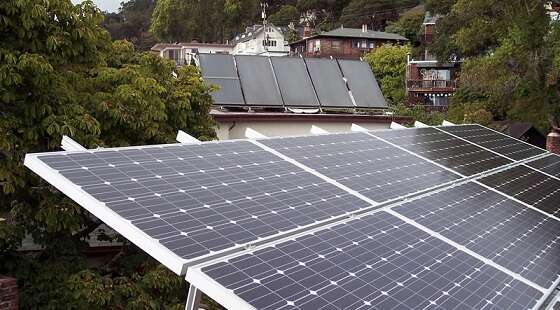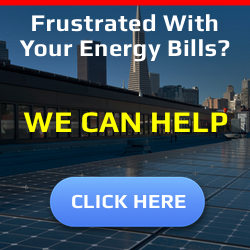Electricity has long been a one-way street—massive, centralised power plants pumping electrons down the wires, utilities acting as the gatekeepers, consumers passively receiving their bills at the end of the month. A rigid, predictable, industrial-age model. But here’s the thing: that model is unravelling. Fast.
Cratering prices means that solar panels are now multiplying on rooftops. Batteries are sitting in garages, quietly stockpiling energy for later. Electric cars are rolling into driveways with bidirectional chargers that can push power back into the home—or even onto the grid. The consumer isn’t just consuming anymore. They’re generating. They’re storing. They’re selling. They are, quite literally, redefining the entire system.
This is where peer-to-peer (P2P) energy trading and decentralised energy models come in. The old monopoly is splintering into something far more dynamic, unpredictable, and alive.
Utilities that grasp this transformation will thrive. Those that resist? Well, history isn’t particularly kind to industries that ignore change (cough *Kodak* cough).
Let’s get into why decentralised energy is rewriting the rules and why utilities must pivot or perish.
Electricity Isn’t Just a Utility Anymore—It’s an Asset
For decades, the utility business was simple: generate power, distribute it, charge customers, repeat. But cracks in that system started forming the moment the first homeowners slapped solar panels on their roofs. The more decentralisedenergy became, the less control utilities had over pricing, supply, and demand.
Fast forward to today. Consumers have options. Not just to buy energy, but to sell it. To trade it. To store it for peak pricing hours and release it when it makes the most financial sense.
What’s driving this shift?
- Prosumers Are Taking Over – Households are no longer just power users. They are micro power stations.
- Grid Congestion Is a Growing Nightmare – Too much daytime solar generation? The grid can’t handle it. Too many ACs cooling at the same time? Infrastructure is strained.
- Consumers Are Wising Up – People don’t just want any energy. They want local, renewable, and affordable energy—preferably without a utility’s fossil fuel driven markup.
For utilities, the writing is on the wall: adapt and reinvent, or risk becoming irrelevant.
Peer-to-Peer Energy Trading: The Marketplace Utilities Never Wanted but Absolutely Need
P2P energy trading is exactly what it sounds like—people selling energy to each other. No middlemen. No rigid pricing structures. No waiting for a utility to set a fixed rate for solar exports. Just real-time, demand-based transactions.
Imagine this:
- You install solar panels and batteries, but by noon, you’ve maxed out your storage.
- Your neighbour, David, doesn’t have solar, but he works from home and needs power.
- Instead of dumping your excess power onto the grid for pennies, you sell it directly to David at a better price.
No utility intervention. No centralised pricing. Just supply meeting demand at a hyper-local level.
Of course, the electrons themselves don’t travel from your roof to David’s kitchen. The grid still facilitates the physical movement of power. But from a financial and accounting standpoint, this is a real trade. And utilities are starting to wake up to the implications.
Why Utilities Should Stop Fighting and Start Innovating
Let’s not sugar-coat it: utilities don’t like disruption. They’re built to maintain stability, predictability, and control.But the reality is this:
1. Consumers Will Leave If You Don’t Give Them Options
Innovation isn’t a luxury. It’s a survival mechanism. Just ask Energy Steiermark, an Austrian utility that saw the writing on the wall. Rather than clinging to outdated models, they embraced P2P trading, creating a local energy marketplace that attracts both residential and commercial customers.
The result? A growing customer base, lower churn, and a product that differentiates them in a crowded market.
2. Grid Upgrades Are Expensive—P2P Trading Reduces the Need
The grid isn’t built for the chaos of modern energy flows. Overproduction of solar in the middle of the day? That’s congestion. A sudden spike in EV charging at night? That’s stress on infrastructure. The traditional solution? Massive grid upgrades that cost billions.
P2P trading, however, keeps energy local. Instead of pumping excess solar across transmission lines, it’s used right where it’s generated. That means less strain on infrastructure, fewer unnecessary upgrades, and lower costs for everyone.
3. Electric Vehicles Are About to Shake Up the Energy Market—Big Time
EVs aren’t just vehicles. They’re energy storage on wheels.
- Charge at night when energy is cheap.
- Sell excess power back to the grid when demand spikes.
- Use your car as a backup battery for your home during outages.
Utilities that embrace vehicle-to-grid (V2G) technology will unlock a massive new energy resource. Those that don’t? They’ll get blindsided by the sheer scale of energy shifting happening outside their control.
The New Utility Model: From Passive Supplier to Active Energy Platform
The days of utilities acting as monopolistic energy dispensers are over. The future? A hybrid model. Utilities won’t just supply energy; they’ll facilitate, optimise, and manage decentralised energy markets.
What does that mean in practice?
- P2P Trading Platforms – Utilities become the trusted enabler rather than the gatekeeper.
- Dynamic Pricing & AI Optimisation – Energy rates that adjust in real-time based on demand and supply.
- V2G Integration – EVs that act as both consumers and suppliers of energy.
- Localised Microgrids – Cities and communities producing and managing their own power independently.
Utilities that embrace these shifts will remain essential players in the energy ecosystem. Those that resist will lose customers, market share, and ultimately, relevance.
The Future Is Decentralised—Are Utilities Ready?
Electricity is no longer just a utility—it’s a marketplace. It’s a network of independent players, exchanging energy with one another, using smart systems to balance supply and demand.
This transition isn’t coming. It’s already here.
The question is: Will utilities evolve, or will they become the Blockbuster of the energy world—watching from the sidelines as new players take over?
If you want to hear from the people shaping this future, listen to my full conversation with Dr Jemma Green on the Climate Confident podcast.
One thing’s for sure—the grid of the future won’t wait for laggards.
Article first published on TomRaftery.com. Photo credit National Renewable Energy Lab on Flickr














